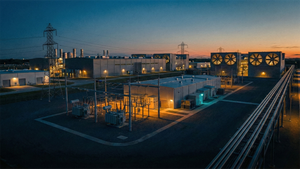
According to the U.K. Civil Aviation Authority (CAA), airspace modernisation can be defined as “improving our airspace structure through new technology, including more accurate satellite-based navigation, and introducing more efficient flight paths.” The U.K. Department for Transport also states that, despite great technological advances, the basic design of U.K. airspace hasn’t significantly changed in 70 years.
According to the BBC, back in the 1950s, when the airspace was originally designed, there were around 200,000 flights in U.K. airspace annually. Last year, the U.K. handled 2.7 million flights. If you cast your mind back to the 1950s, Boeing had just brought their first jetliner to market, the 707, which entered service with Pan Am in 1958.
Why Modernising Airspace Matters Now
Since then, the two largest manufacturers in the aviation sector, Boeing and Airbus, have introduced 15 different commercial airliners between them, with many variants of the different aircraft being released. Each has contained new technologies, making aviation safer and greener for the billions of passengers who have flown on Boeing and Airbus aircraft over the years.
With this in mind, it is easy to see how these aviation technology advancements have changed flight, but airspace and the way we use it have not kept pace. This means that we are not experiencing the full potential benefits of the new technology on offer.
Technological Advances Driving Change
Among the largest technological advancements made have been the ETOPS ratings achieved by some of the new generation passenger aircraft. ETOPS stands for “Extended range Twin-engine Operations Performance Standards.” In 2017, the International Civil Aviation Organization (ICAO) introduced another term for this, EDTO, which stands for “Estimated Diversion Time Operations.” The two terms have a similar meaning, and both are still widely used in aviation today.
These ratings essentially refer to how far an aircraft of a particular type can be, during any one journey, from an airport suitable for landing. As time and technology have progressed, the ETOPS ratings achieved have become higher, which means that when routing a flight, airlines are able to fly a more direct route. Some of the newest generation aircraft certified for ETOPS 370 can be up to 6 hours and 10 minutes from the nearest airport at any given point during the flight, depending on the ETOPS certification of the operator on that given aircraft type. This certification is a dual certification, with both the aircraft and the operator achieving a rating.
In the past, many transatlantic flights from Europe flew north to remain in close proximity to airports along the route in case of an emergency. Now that newer aircraft are certified to be further from airports, airlines can take a more direct route, meaning faster flights, less fuel and also the potential for taking advantage of jet streams along the way.
This change has also connected cities that historically would not have been able to have direct flights between them due to large ocean expanses. Modernising our airspace will continue to enable operators around the world to fly the most efficient routes to their destinations, not held back by rules designed 70 years ago when both aircraft and navigation technology were much less advanced.
Integrating Drones and Air Taxis (eVTOLs) Into Airspace
As well as the technology on conventional aircraft improving, there is also an emerging technology element that is necessitating the modernisation of our airspace. According to the Department for Transport, safe integration of drones into air traffic management is one of the key reasons for modernising U.K. airspace. Drones have continued to take their place as a useful tool for many different industries, including construction, surveying, photography and agriculture, as well as for enthusiasts.
Alongside drones and airspace integration, regulators around the world are starting to consider the certification of electric vertical take-off and landing (eVTOL) aircraft as air taxis and for cargo carriage. In the United Arab Emirates (UAE), the Roads and Transport Authority (RTA) and Joby have agreed to a partnership aiming to launch a commercial air taxi service by 2026. Joby estimate that a flight from Dubai International Airport to Palm Jumeirah will take just 10 minutes, a journey which is typically 45 minutes by car.
In China, EHang have now started commercial passenger operations in Guangzhou and Hefei, offering tourists low-altitude sightseeing flights. With these aircraft getting closer and closer to becoming everyday users of our airspace, it is clear to see that changes will be needed to accommodate this in a safe manner.
Environmental Benefits of Airspace Modernization
Another key benefit of airspace modernisation concerns the environment. In the U.K., there is a target set by the government for Net Zero by 2050. All industries are looking inwards at their operations to make changes to their operation to be able to comply with this, and the aviation sector is no different. One of the primary benefits of airspace modernisation for the environment is the immediate reduction in carbon emissions.
Whilst other means of reducing carbon emissions are being worked on, such as sustainable aviation fuel (SAF), huge reductions in carbon emissions can be made, by enabling aircraft to fly optimal routes. These airspace changes for sustainable aviation facilitate more frequent continuous climbs and descents, thereby requiring less engine power. Modernisation also helps minimize delays, which will reduce the need for aircraft to be held in holding patterns and burn extra fuel, which is currently commonplace around the U.K.’s busiest airports.
According to the Department for Transport, one modernisation measure in the southwest of England has already been estimated to save 12,000 tonnes a year—enough to power seven trips around the world. Further modernisation plans are expected to deliver even greater results, with easyJet estimating it could reduce its emissions by up to 10% with airspace improvements across Europe. With a nationwide deployment, it is easy to see how these environmental benefits can start to add up.
Global Initiatives: U.K, U.S. and Europe Leading the Way
Whilst this article references the U.K. term “airspace modernisation,” this is very much a worldwide effort, with many of the world’s leaders in aviation currently looking at their airspace design. In the U.S., the FAA have started a project known as Next Generation Air Transport System (NextGen). Similarly, the European Union Aviation Safety Agency (EASA) have started a project known as Single European Sky (SES).
In the U.K. alone, GBP750 million is being invested in airspace technologies according to the National Air Traffic Services (NATS), while the U.S. announced an additional USD12.5 billion of funding for the upgrading of their air traffic control system, taking their total to USD31.5 billion.
Ultimately, airspace modernisation is, to use the U.K. phrasing, very much a hot topic across the world’s major aviation powers, drawing significant investment as we look towards a greener, safer and more diverse aviation industry.
About Global Aerospace
Global Aerospace has a century of experience and powerful passion for providing aviation insurance solutions that protect industry stakeholders and empower the industry to thrive. With financial stability from a pool of the world’s foremost capital, we leverage innovative ideas, advanced technology and a powerful synergy among diverse team members to underwrite and process claims for the many risks our clients face. Headquartered in the UK, we have offices in Canada, France, Germany and throughout the United States. Learn more at https://www.global-aero.com/
Global Aerospace Media Contact
Suzanne Keneally
Vice President, Group Head of Communications
+1 973-490-8588
Source: Prodigy.press
Release ID: 1818050





